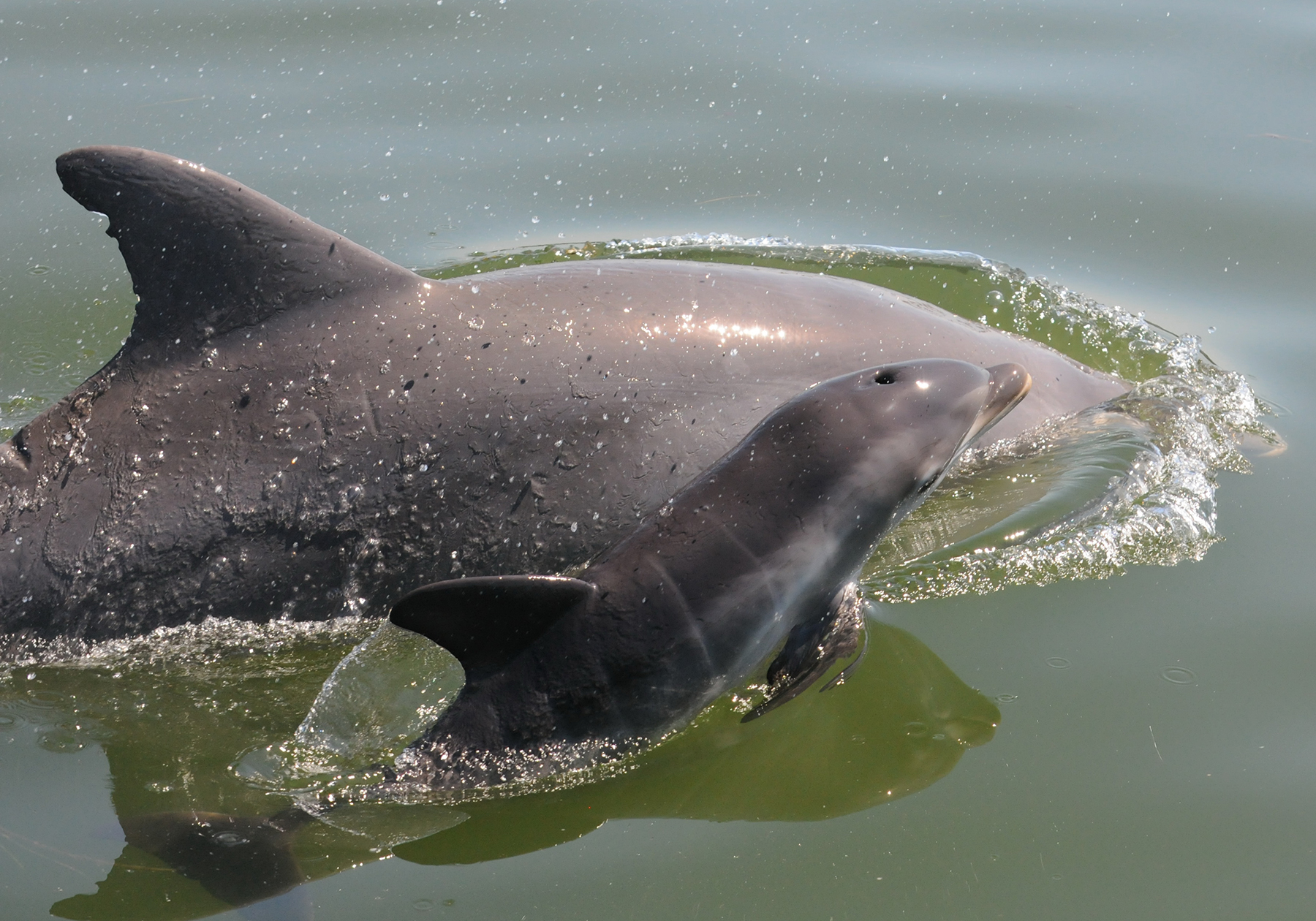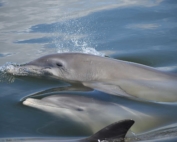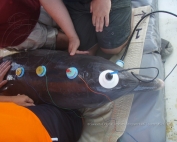Dolphin Biology

SDRP conducts the world’s longest-running study of a wild dolphin population, initiated in 1970. Information available from five decades of research on the multi-decadal, multi-generational, year-round resident community of individually identifiable bottlenose dolphins of Sarasota Bay established this as a unique natural laboratory for learning about the biology, behavior, ecology, social structure, health, and communication of dolphins, as well as the effects of human activities on them.
Long-term study is crucial for understanding the lives of members of long-lived species such as bottlenose dolphins, and for being able to detect trends in populations relative to changes in their environment. Knowing the long-term geographic range of a population unit allows the measurement of exposure to threats, which in turn facilitates mitigation, including direct interventions.
The ability to observe identifiable individual dolphins of known sex, age, and familial relationships through all of their life history milestones and associated transitions in behavioral and social patterns, to collect data on health and condition, and to then document their reproductive success and cause of death is rare in cetacean research.
Dolphins, which breathe air, are warm-blooded and give birth to live young, get their name from the Ancient Greek delphis meaning “fish with a womb.” There are some 30-40 species of dolphins that vary in size from 4 feet and 80-100 pounds (such as the franciscana dolphin from coastal South America), to 31 feet and 10 tons (Orcas). Dolphins are found worldwide, from coastal waters to the deep, open ocean.
In Florida, male bottlenose dolphins (Tursiops truncatus) grow to about 9 feet long and can weigh some 600 pounds, while females reach 8 feet long and about 400 pounds. Elsewhere in the world, bottlenose dolphins can reach 12 feet long and more than 1,000 pounds. It isn’t unusual for them to eat more than 15 pounds of fish a day, and nursing females may eat more than 30 pounds each day. They are the most common and widespread type of dolphin in the coastal waters of Florida.
Long-term studies by the SDRP have included learning about dolphins’ basic biology, and especially how their biology changes over time and as they reach developmental milestones — growing from calf, to juvenile, to adult, for instance.
Our long-term datasets have established the Sarasota dolphins as a reference population for comparisons to more at-risk populations, such as those impacted by the Deepwater Horizon oil spill, leading to better understanding of human impacts.
Data are collected through a variety of techniques, including systematic photographic identification surveys, focal animal behavioral observations, tagging and tracking, and passive acoustic monitoring from shore-based listening stations. Research is conducted under a series of Scientific Research Permits issued by NOAA’s National Marine Fisheries Service, and annual renewals of Institutional Animal Care and Use Committee approvals by Mote Marine Laboratory.
Feeling the Heat
Feeling the Heat During a Hot Summer People around the world are feeling extreme heat this summer and we’re receiving a lot of questions about what the heat might mean for dolphins. In
Barbed! Stingray Spine Injuries
Did you know that stingrays are dolphin neighbors? They share share shallow seagrass habitat in Sarasota Bay where they forage for food. Dolphins are even occasionally "barbed" by the stingray's venomous spine. These spines
Exploring Microbiomes
Exploring Microbiomes The science of understanding microbiomes has received increasing attention over the past few decades, especially in the context of understanding animal health. Microbomes are a collection of microorganisms
Measuring Dolphin Hearing
Researchers test dolphins' hearing using using auditory evoked potentials, or AEPs. During testing, sensors are placed on an animal’s head to measure brain activity in response to a sound. This is the same way








